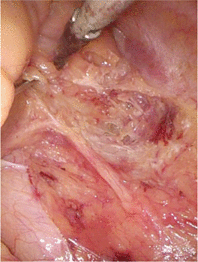Pelvic autonomic nerve preservation in radical rectal cancer surgery: changes in the past 3 decades
- PMID: 27478196
- PMCID: PMC4976685
- DOI: 10.1093/gastro/gow023
Pelvic autonomic nerve preservation in radical rectal cancer surgery: changes in the past 3 decades
Abstract
The advent of total mesorectal excision (TME) together with minimally invasive techniques such as laparoscopic colorectal surgery and robotic surgery has improved surgical results. However, the incidence of bladder and sexual dysfunction remains high. This may be particularly distressing for the patient and troublesome to manage for the surgeon when it does occur. The increased use of neoadjuvant and adjuvant radiotherapy is also associated with poorer functional outcomes. In this review, we evaluate current understanding of the anatomy of pelvic nerves which are divided into the areas of the inferior mesenteric artery pedicle, the lateral pelvic wall and dissection around the urogenital organs. Surgical techniques in these areas are discussed. We also discuss the results in functional outcomes of the various techniques including open, laparoscopic and robotic over the last 30 years.
Keywords: pelvic autonomic nerve preservation; sexual dysfunction; total mesorectal excision; urinary dysfunction.
© The Author(s) 2016. Published by Oxford University Press and Sixth Affiliated Hospital of Sun Yat-Sen University.
Figures




References
-
- Bokey EL, Ojerskog B, Chapuis PH, et al. Local recurrence after curative excision of the rectum for cancer without adjuvant therapy: role of total anatomical dissection. Br J Surg 1999;86:1164–70. - PubMed
-
- Heald RJ, Moran BJ, Ryall RD, et al. Rectal cancer: the Basingstoke experience of total mesorectal excision, 1978 – 1997. Arch Surg 1998;133:894–99. - PubMed
-
- Braga M, Frasson M, Vignali A, et al. Laparoscopic resection in rectal cancer patients: outcome and cost-benefit analysis. Dis Colon Rectum 2007;50:464–71. - PubMed
-
- Lujan J, Valero G, Hernandez Q, et al. Randomized clinical trial comparing laparoscopic and open surgery in patients with rectal cancer. Br J Surg 2009;96:982–9. - PubMed
Publication types
LinkOut - more resources
Full Text Sources
Other Literature Sources
Miscellaneous

